
Christchurch is the largest city in the South Island and the second-largest city by urban area population in New Zealand. Christchurch has a population of 396,200 and is located in the Canterbury Region, near the centre of the east coast of the South Island, east of the Canterbury Plains. It is located near the southern end of Pegasus Bay, and is bounded to the east by the Pacific Ocean and to the south by the ancient volcanic complex of the Banks Peninsula. The Avon River (Ōtākoro) winds through the centre of the city, with a large urban park along its banks. With the exception of the Port Hills, it is a relatively flat city, on an average around 20 m (66 ft) above sea level. Christchurch has a reputation for being an English city, with its architectural identity and nickname the 'Garden City' due to similarities with garden cities in England. Christchurch has a temperate oceanic climate with regular moderate rainfall.
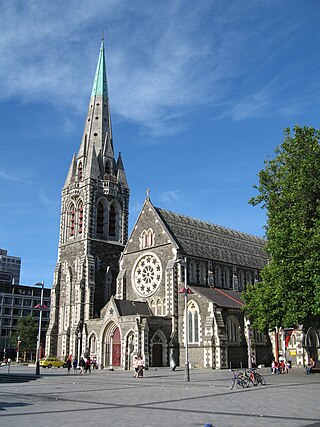
ChristChurch Cathedral, also called Christ Church Cathedral and (rarely) Cathedral Church of Christ, is a deconsecrated Anglican cathedral in the city of Christchurch, New Zealand. It was built between 1864 and 1904 in the centre of the city, surrounded by Cathedral Square. It became the cathedral seat of the Bishop of Christchurch, who is in the New Zealand tikanga of the Anglican Church in Aotearoa, New Zealand and Polynesia.
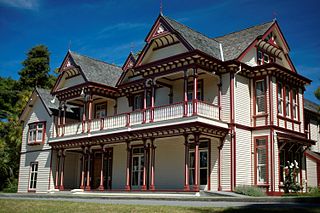
Riccarton is a suburb of Christchurch. It is due west of the city centre, separated from it by Hagley Park. Upper Riccarton is to the west of Riccarton.
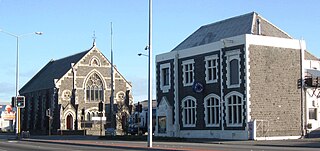
Sydenham is an inner suburb of Christchurch, New Zealand, two kilometres south of the city centre, on and around the city's main street, Colombo Street. It is a residential, retail and light industrial suburb.

Upper Hutt College is a state co-educational secondary school located in Trentham in the city of Upper Hutt, New Zealand. The school opened in 1962 as the city's second state secondary school, supplementing Heretaunga College in Wallaceville. As of February 2024, the school has a roll of 1,163 students from years 9 to 13.

Northfield Manor House is a Manor House, on Bristol Road South, Northfield, Birmingham, England. It was formerly known as Manor Farm, and under that name was home to George and Elizabeth Cadbury.
Holy Name Seminary was a Roman Catholic seminary staffed by the Society of Jesus which existed in Christchurch, New Zealand from 1947 until 1978.

The Durham Street Methodist Church was a former heritage-listed Methodist church located in Christchurch, New Zealand. Built in 1864 in the Gothic Revival style, it was, prior to its destruction, the earliest stone church constructed in the Canterbury region.

The Civic in Manchester Street, Christchurch Central City, was one of the former civic buildings of Christchurch City Council (CCC). Built in 1900, it was first used as an exhibition hall, a cinema and then a theatre. It burned down in 1917. The northern part of the building was purchased by CCC and opened as the civic office in 1924, and served this purpose until 1980. After that it had several uses, including a restaurant, bar and live music venue. The building was heavily damaged in the February 2011 Christchurch earthquake, and was demolished.

J Ballantyne and Company Ltd, trading as Ballantynes is a Christchurch, New Zealand-based department store operator. Established in 1854, it is New Zealand's oldest department store. Ballantynes is also a member of the Intercontinental Group of Department Stores. Alongside their flagship store in Christchurch Central City, stores also operate in Timaru and Invercargill.

Cecil Walter Wood was a New Zealand architect. He was the dominant architect in Canterbury during the interwar period.

Joseph Clarkson Maddison was a New Zealand architect. He trained as an architect in his native London and came to Canterbury at the age of 22. At the end of the 19th and beginning of the 20th century, he was one of the most prominent architects in Christchurch, receiving commissions from all over the country. Until the February 2011 Christchurch earthquake, 13 of his buildings were listed by Heritage New Zealand on their register, with three of those Category I listings, but many of the Christchurch buildings have been demolished since. His style was plain and utilitarian, and he specialised in the classical Italian mode.

Warren and Mahoney is an international architectural and interior design practice - one of the few third generation architectural practices in the history of New Zealand architecture. It is a highly awarded architectural practice, with offices in New Zealand and Australia.
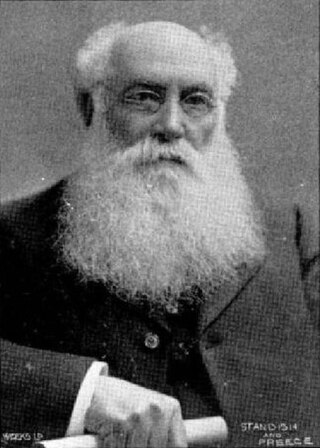
Samuel Charles Farr was a 19th-century builder and architect in Christchurch, New Zealand. He intended to emigrate from England to Auckland, but significant shipping problems saw him end up in Akaroa in 1850 instead. From 1862, he lived in Christchurch. Farr has a number of firsts against his name: the first marriage in Canterbury, he designed Akaroa's first church, designed New Zealand's first iron verandahs, and he started Sunday schools in Canterbury. As a leading member of the Acclimatisation Society, he stocked almost every lake and river in Canterbury with fish and was instrumental in introducing the bumblebee to New Zealand. His most notable building was Cranmer Court, the former Normal School, in the Christchurch Central City; this building was demolished following the February 2011 Christchurch earthquake.

Fire and Emergency New Zealand is New Zealand's main firefighting and emergency services body.
Robert William England was a New Zealand architect from Christchurch.

The Railway Hotel is a former pub and hotel in Station Road, Edgware and a Grade II listed building with Historic England.
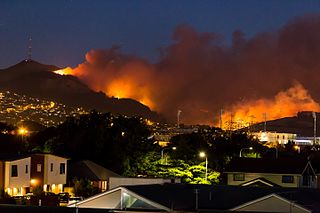
The 2017 Port Hills fires were wildfires in the Port Hills of Christchurch, New Zealand. Two separate fires, several kilometres apart, started on Monday afternoon on 13 February 2017. By Wednesday night, the fires had combined to one large area. A helicopter crashed helping to fight the fires, causing the death of the pilot. Nine houses were destroyed and a further two were significantly damaged by the fires, and hundreds of residents were evacuated. The cause is officially undetermined, but it is believed the fires were deliberately lit.
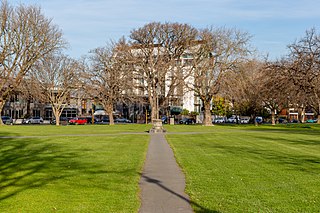
Latimer Square is an urban park in central Christchurch, New Zealand. It is located 400 metres (440 yd) east of the city's centre, Cathedral Square. Many commemorative events take place in Latimer Square. The square lies between the major urban thoroughfares of Gloucester Street and Worcester Street. Madras Street runs north and south to Latimer Square. The square is grassed and crossed by concrete paths and edged by mature trees. It covers an area of a little over 1.8 hectares.
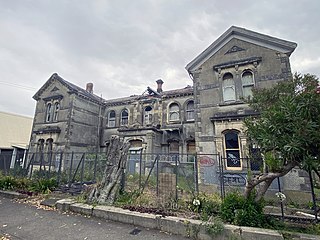
Carlile House, formerly Costley Training Institute, was a boys' home and training centre, built in 1886. It was enabled by a bequest of £12,500 from Edward Costley. It was originally bequest to the Kohimarama Training School, however, the Kohimarama Training School had since closed. The trustees recommended that a training institution should be established and Sir Robert Stout prepared a Bill that passed without opposition, entitled "The Costley Training Institution Act, 1885".





















